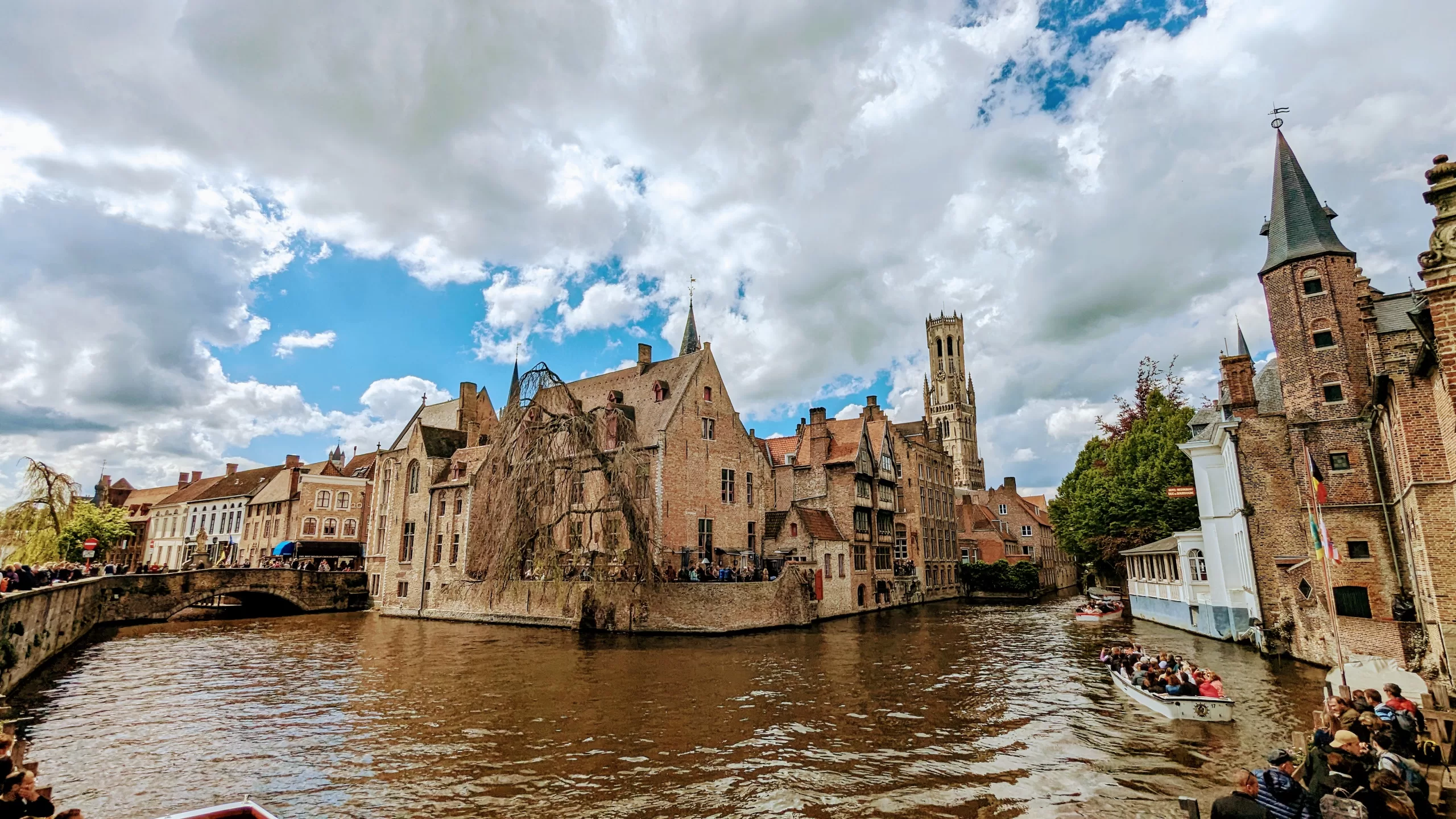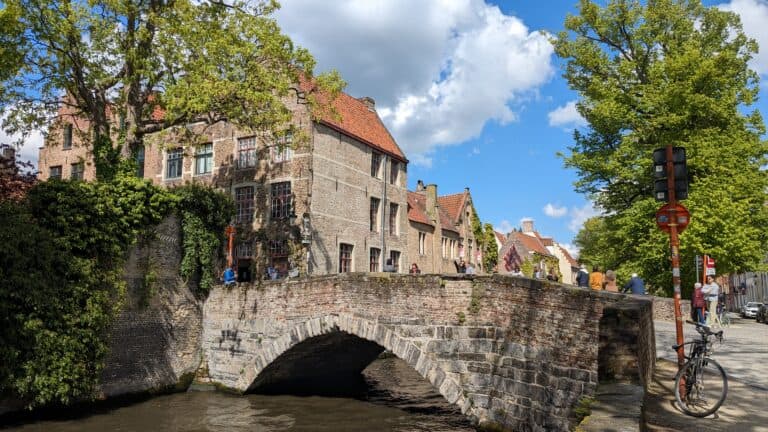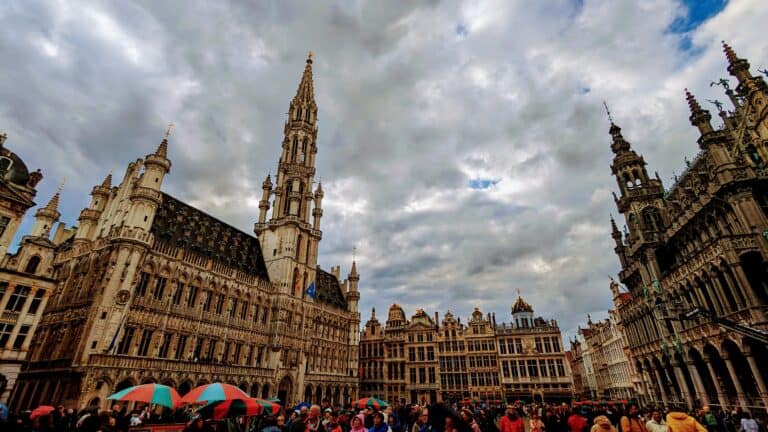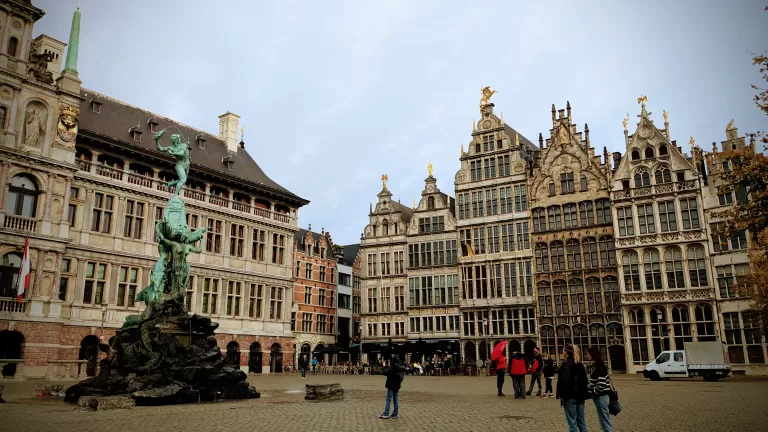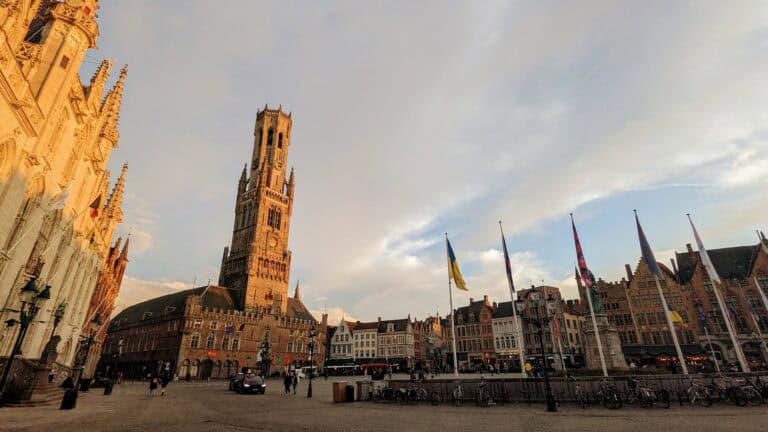29 unmissable things to do in Bruges, Belgium (2025)
When you first hear “Bruges”, you might picture cobbled lanes, gothic towers and maybe Colin Farrell having an existential crisis. But Bruges is far more than just a backdrop for a dark comedy.
It’s a beautifully preserved medieval city that feels like stepping into a storybook – only it’s real, and you can drink great beer while exploring it.
It’s known for its scenic canals that you can explore by foot or boat, and its the perfect place to wander round, drink a coffee, and get lost in.
It’s packed full of amazing things to do, and its quaint streets and canals reminded us of a mix between Venice and Amsterdam. It dates back to the middle ages, and is a UNESCO World Heritage Site.
Whether you’re planning a weekend break or weaving it into a longer Belgium trip, here’s our no-nonsense guide to the best things to do in Bruges – packed with practical tips, real insights, and ideas that go beyond the basics.
Don’t forget to check our guide to travelling to Bruges and our guide to the best places to stay, as well as all our content on travelling to Belgium.
The authors: we spent five days in Bruges as part of our first tour of Belgium. If you have any questions or suggestions then drop them in the comments!
Iconic sights and landmarks in Bruges
Stroll around Bruges’ canals and streets
Bruges is often referred to as the “Venice of the North” due to its picturesque canals lined with medieval buildings. The beautiful canals, medieval streets and quaint architecture are one of the best things to do in Bruges, and wondering around them was by far our favourite activity.
The streets are flat, peaceful, and pretty much free of cars. It’s easy to spend an entire day getting happily lost.
Consider also hiring a bike, which will help you cover more ground. Or, there’s many different organised walking tours you can do, covering everything from Bruges’ medieval history, instagrammable spots, or a chocolate tour. You can even do tours on bike, or rickshaw.
You can also get a canal boat tour along the canals to see Bruges. Bear in mind that they get busy, so be prepared to queue to get on and it to be a squeeze once on board (we didn’t join one because of this reason). Many tours come with multilingual commentary to learn more about the history. Popular starting points for canal tours are at Rozenhoedkaai and Dijver, but you’ll see lots of different boarding points as you walk about. Tours last 30-50 minutes and cost around €15 for adults.
Why go? Relaxation and to see the main draw of Bruges.
How long? Half a day at least.
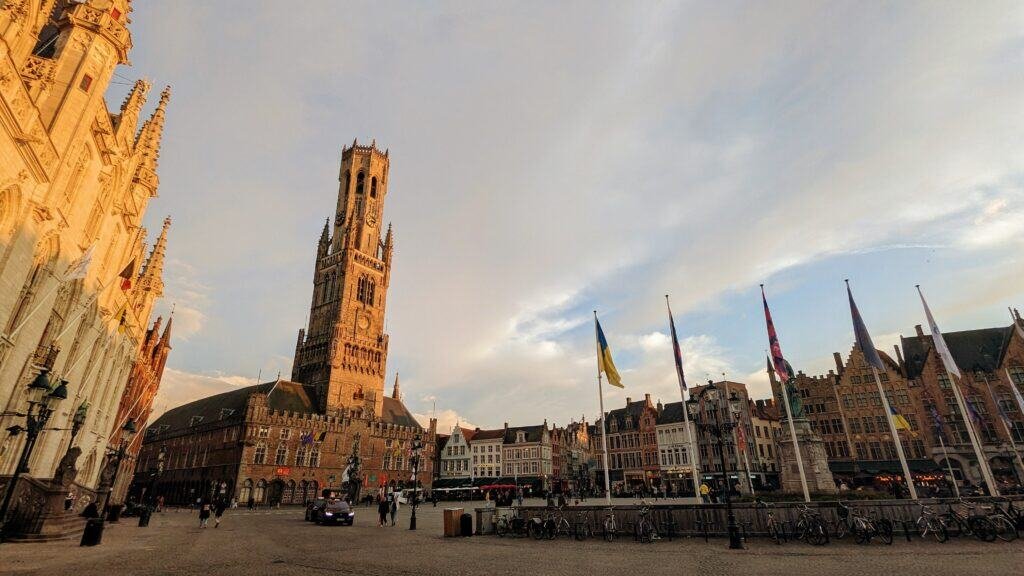
People watch at the Market Square
The Markt (also known as Grote Markt) is the central square of Bruges’ historic centre and a must visit on any trip to the city. It’s been the centre of Bruges since the 10th century and was an important trading hub.
It’s surrounded by beautiful medieval buildings and landmarks, including the Belfry of Bruges and several historic houses.
Most of these are now cafes and restaurants. Like any main tourist attraction, they can get pretty busy and are more expensive than other restaurants, however they’re perfect for people watching. If you’re eating, we’d recommend going somewhere else though – it will be cheaper and better.
Budget tip: if you’re on a budget, go to a supermarket and get a coffee (or a sandwich lunch). You can drink/eat in the square and enjoy the same people-watching, at much less money.
Why go? To see a beautiful and historic square.
How long? 30 minutes to see it, but longer if you want to grab a coffee.
Climb the Belfry of Bruges
The Belfry tower of Bruges is one of the city’s most iconic landmarks and a UNESCO World Heritage Site. The 83-metre high tower was built in the 13th century and served as the city’s watchtower and treasury.
The Belfry stands in the Market Square, offering fantastic views over the city’s rooftops and canals. From the top, you can take in panoramic views across the city and spot other famous Bruges’ landmarks. It’s the perfect vantage point to get your bearings and appreciate Bruges’ fairytale medieval architecture.
Be warned – climbing the 366 steps to the top isn’t easy. A lift is available for part of the ascent. Tickets cost around €15 and can be bought online, or at the entrance.
Tip: entry is free with the Bruges card. You’ll also get free entry to 10 other attractions in Bruges (just make sure that you’ll save enough to make it worth it).
Why go? For views, and to see a UNESCO listed landmark.
How long? One hour, but perhaps factor in a coffee in Market square afterwards to rest your legs.
Visit the Church of Our Lady
The Church of Our Lady is one of the most impressive landmarks in Bruges. The soaring brick tower is 116m high, with incredible views over the city and surrounding countryside.
It’s most famous treasure is a white marble sculpture called the Madonna and Child created by Michelangelo around 1504.
To reach the top of the tower, you need to purchase a ticket at the entrance to the church. It’s €6 for an adult ticket.
Try to visit the church tower earlier or later in the day when there’s fewer crowds. An early evening climb up the tower lets you watch the sunset over the city from above.
Why go? More views, and to see a Michelangelo masterpiece.
How long? 1 hour.
See the Basilica of the Holy Blood
The Basilica of the Holy Blood is one of the most visited churches in Bruges. It contains what is said to be a cloth stained with the blood of Jesus Christ, that was brought to Bruges in 1149 after the Second Crusade.
The basilica consists of an upper and lower chapel. The upper chapel contains the relic of the Holy Blood, which is brought out for veneration every Friday afternoon and on holy days (we recommend timing your visit so you can see it, if you can).
Admission is free, but be prepared for crowds if the relic is displayed. Even if you are not religious, this is one of the most historically significant sites in Bruges.
Why go? To see a beautiful church and a historical landmark.
How long? One hour.
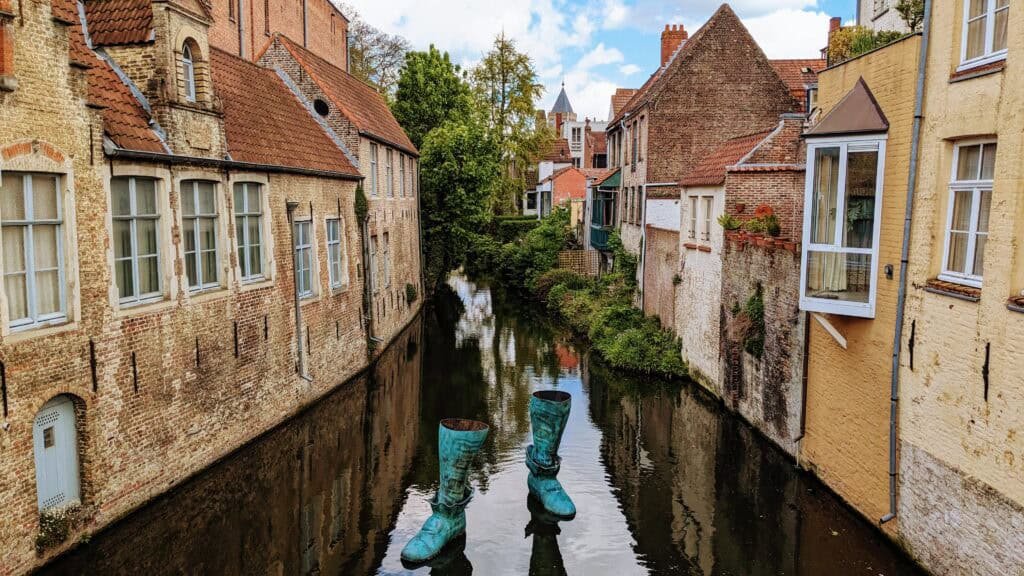
Bruges’ local history and culture
Explore the Adornes Estate
The Adornes Estate is one of the lesser-known sites of Bruges, and you often won’t see it in other travel guides. It was founded by the Adorno family in the 15th century and is still inhabited by the same family (the 17th generation to live there).
Over the years it’s been also been a religious foundation, a monastery, a school and a lace museum. Today, you can wander about the estate, hidden just outside the centre of Bruges.
Alongside the mansion is the Jerusalem Chapel, alms houses and gardens. There’s also a museum, and exhibitions.
Tickets cost €10, available on the door. It’s closed on Sundays and public holidays.
Why go? An interesting estate which is often missed.
How long? Two hours.
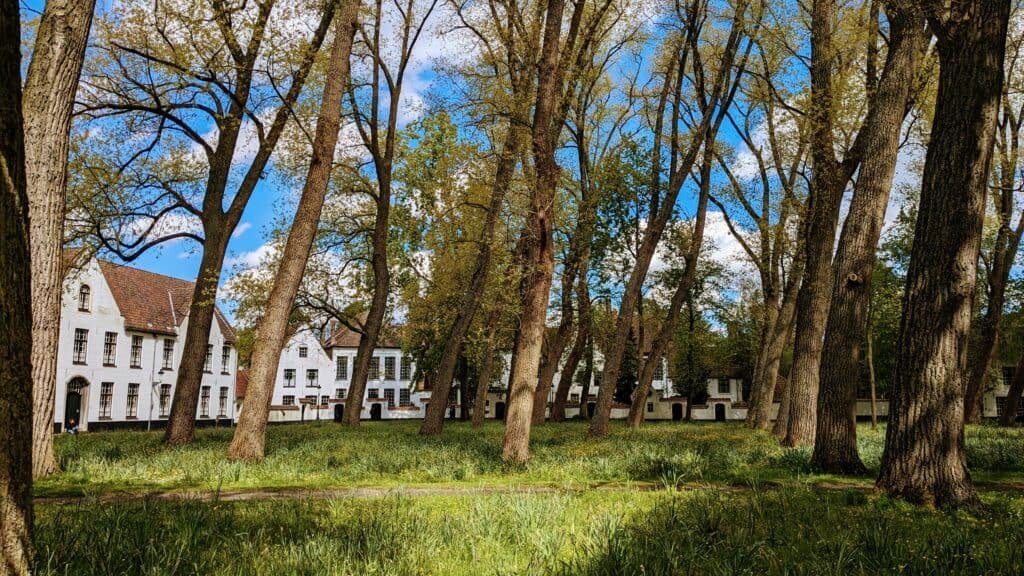
Wander round the Begijnhof (Beguinage)
The Begijnhof was once the home of the beguines, emancipated lay-women who led a life of prayer. Founded in 1245, the home is now inhabited by practicing nuns. The Bruges Begijnhof is one of 13 in Belgium which make up another UNESCO World Heritage Site. You can see other ones in Ghent and in Antwerp.
Although small, it’s a lovely place to pop in and have a quiet look round. We found it a huge contrast to busy Bruges, especially when you step out of the crowded street into peaceful countryside.
There’s a small museum on site too.
Why go? A peaceful contrast to busy Bruges, and to tick off another World Heritage Site.
How long? 30 minutes.
Step inside the opulence of the Gruuthusemuseum
Tucked just beside the Church of Our Lady, the Gruuthusemuseum is one of those Bruges gems that often gets skipped in favour of the more headline-grabbing spots – but don’t make that mistake.
Once the lavish mansion of the lords of Gruuthuse (who made their fortune in the medieval gruit trade – essentially the seasoning for beer), it’s a palace-cum-museum covering everything from tapestries and Gothic furniture to religious relics and silverware. We loved how it told the story of Bruges through these items.
It’s not just what’s inside that impresses. The building itself is a stunner, with its grand staircase tower and intimate chapel that directly links to the church next door – a show of wealth and influence back in the day.
Entry costs €14 and it’s closed on Mondays.
Tip: Climb to the upper floors for lovely views over the canal and the church courtyard.
Why go? To learn about the history of Bruges in a pretty building
How long? 2 hours
Dive into Flemish art at the Groeningemuseum
Bruges’ answer to the Louvre (on a far more manageable scale), the Groeningemuseum is the city’s top fine art gallery – and a must for anyone with an eye for the old masters.
It houses a brilliant collection of Flemish and Belgian works, most famously by Jan van Eyck, Hans Memling and Hieronymus Bosch. The gallery is compact and easy to navigate, which makes it ideal for a gentle hour or two away from the crowds.
Although the work it contains is brilliant, if you have limited time you may want to favour some of the other museums unless you have a special interest in classic art.
Entry costs €14 and it’s also closed on Mondays.
Why go? To see the classic Flemish masters.
How long? Two hours.
Food, drink and indulgence
Visit the De Halve Maan Brewery
De Halve Maan Brewery is a famous Belgian beer maker located in the heart of Bruges. It’s a family-owned brewery which has been making beer in Bruges for over 150 years.
Fun fact: there is a 2 mile pipeline underneath Bruges which takes beer from the brewing site to the bottling plant, to avoid having to run trucks through the city centre.
You can take a tour of the De Halve Maan brewery, where you’ll go through the factory and see how beer is brewed, and of course sample some beer. The brewery tour ends with a glass of Brugse Zot beer on the rooftop bar overlooking the city.
The brewery tour lasts about an hour and costs €16. Tours run daily at various times. It’s best to book tickets online in advance as tours can sell out, especially in peak season.
Tip: For great views of Bruges, go up to the rooftop bar even if you aren’t taking the full tour. You can access it for just €2 extra when you buy a beer.
Why go? To see how beer is brewed, or perhaps just for a beer in the sun.
How long? 1.5 hours, plus drinking time.
Relax with a Belgian beer
One of our favourite things about Belgium is it’s incredible beer culture. Beautiful pubs, with a vast range of 30 plus beers.
They pack a lot more punch than typical beers back in the UK, both in terms of flavour but also alcohol strength.
Three stand-out favourites of ours are:
- Café De Garre, hidden down a narrow alley and with a very strong house beer
- Café Vlissinghe, the city’s oldest pub (dating to 1515) which has a great ambience and interior.
- Den Turk, a true local pub near City Hall serving Belgian classics in an unpretentious setting.
Why go? For the culture of course.
How long? The evening!
Indulge at Bruges’ chocolate shops
Belgian chocolate is world famous for its high quality and unique flavours and Bruges has some of the best chocolate shops in Belgium.
You’ll see chocolate shops everywhere, and you can even do a chocolate walking tour. If you’re looking for chocolate that’s a bit higher quality, check out Dumon and The Chocolate Line.
Dumon has been making chocolate in Bruges since the late 1800s and are famous for their smooth, creamy chocolates. Stop by to pick up a box of pralines or truffles, or sit down in the tea room and enjoy a hot chocolate.
The Chocolate Line is famous for it’s unique flavour combinations like ginger and pepper, creating avant-garde chocolates. The shop on Simon Stevinplein has chocolate tasting sessions so you can try before you buy too.
You can also visit the Bruges Chocolate Museum. We didn’t visit, but you can learn about the history of Belgian chocolate and see demonstrations of chocolate making.
Why go? Chocolate – when in Bruges…
How long? One hour.
Bruges Christmas market
The Bruges Christmas Market, also known as Winter Glow, takes place annually in the Market Square from mid-November to early January.
We’re not huge fans of Christmas markets, but the Bruges one has a good reputation (and we think Bruges would be the perfect location for a snowy Christmas market).
You’ll find the classice Christmas market activities such as ice skating and wooden chalets selling handicrafts, local food, and Belgian beer. There’s also live music performances, or you can just soak up the festive ambiance while sipping on hot mulled wine or hot chocolate.
The market is open daily. It gets quite crowded on weekends and in the evenings after work hours. Weekday mornings tend to be quieter.
Why go? A Christmas market in a lovely location.
How long? For us, 10 minutes, but if you like Christmas markets there’s enough to fill half a day.
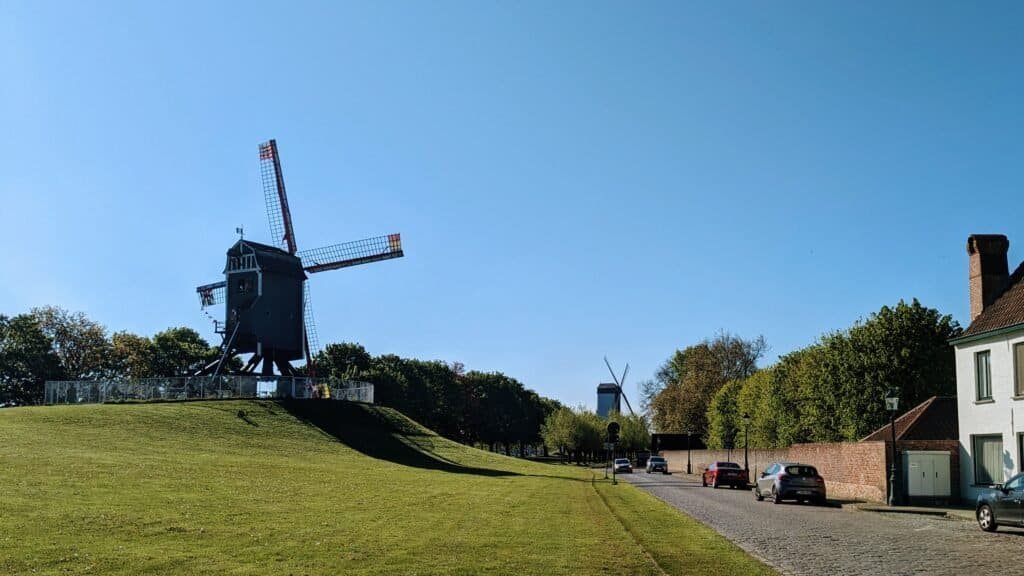
Off the beaten path
Wander the lesser-seen parts of Bruges
Don’t just stick to the town centre of Bruges, there’s loads of pretty streets further outside.
While they aren’t quite as historical, they’re still beautiful and are a lot quieter – being less touristy and where local Belgians live.
We’d recommend wondering round Sint-Anna Quarter in the North East (check out the windmills along the canal) and the Magdalena Quarter. The Minnewater park is a quiet and pretty park near the train station that’s nice to escape the crowds in. We also had a great walk most of the way round Bruges on the green city ramparts.
Why go? Quiet, pretty streets in ‘real’ Bruges.
How long? 1 hour, or however long your walk is.
Cycle to the storybook village of Damme
If the weather’s looking ok (not always a given in Belgium), hop on a bike and head northeast along the canal to Damme, a small village that feels like a smaller and quieter version of Bruges.
The ride itself is half the fun – around 6km of flat, scenic path with willows lining the water and the odd swan gliding past. It’s classic Flemish countryside, and beautifully peaceful after the hustle of Bruges.
Once you arrive, you’ll find a sleepy market square, a striking 13th-century church (whose tower you can climb for views across the polders), and a handful of charming cafés and bookshops – Damme has a reputation as a literary town, which adds to its quiet appeal.
It’s an easy half-day trip, and if you’re feeling lazy on the way back, there’s even a little boat you can take instead. There’s also a lovely old windmill on the edge of town which is great for a photo.
Why go? To escape Bruges and see a beautiful Belgian village.
How long? Half a day (up to the whole day)
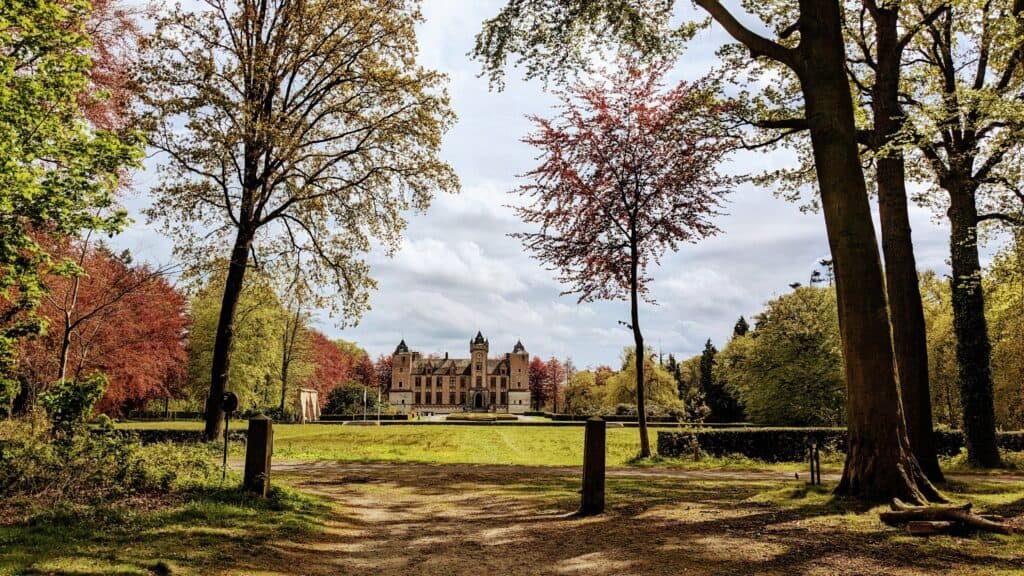
Walk through the Belgian countryside
We had some time to kill and having spent a while in cities, we wanted to go out and see the Belgian countryside. We went to Kasteel Van Loppen, which is a castle south of Bruges.
Its about a 20 minute bus ride from the centre of Bruges. Take the number 2 bus which runs every 20 minutes (note that there are a further three buses every hours but they terminate at Bruges station, so don’t take these – take the ones terminating at Kinepolis). Get off at Kinepolis and cross over the motorway bridge (Google Maps shows where).
It’s a short walk to the castle, where you can join a number of trails taking you round the countryside including one a longer trail which takes you to three castles (castles by Belgian standards – think large stately homes rather than huge stone fortresses).
Day trips from Bruges
Bruges makes an excellent base to take day trips to other Belgian towns and cities. The train station in Bruges provides easy connections to many destinations within an hour or two journey.
Some of our top day trip recommendations include:
Ghent – A medieval city with great architecture, and packed full of museums. It’s just a 30 minute train ride from Bruges. We visited as a day trip, going from Brussels to Ghent to Bruges in a day.
Brussels – The capital of Belgium, with world-class museums, art nouveau architecture, and great food. Direct trains take 1 hour.
Damme – A picturesque historic town just 4 miles from Bruges. Easily reached by bicycle or bus. We didn’t have time to go sadly, but this guide from The Invisible Tourist is super helpful.
Ostend – A lively seaside town with a long beach promenade. Direct trains take just 15 minutes.
Ypres – Immerse yourself in WWI history, visiting the Flanders Fields battle sites and museums. 1.5 hours by train.
Antwerp – Belgium’s 2nd largest city, with an impressive cathedral, museums, and diamond district. 1 hour by train.
This article is now featured on GPSmyCity. To download this article for offline reading or travel directions to the attractions highlighted in this article, go to Walking Tours and Articles in Bruges on GPSmyCity.
This page contains affiliate links. If you make a purchase through one of these links we make a small commission to help run this site, at no cost to you. Making a commission never affects the advice we give - see our content policy.

